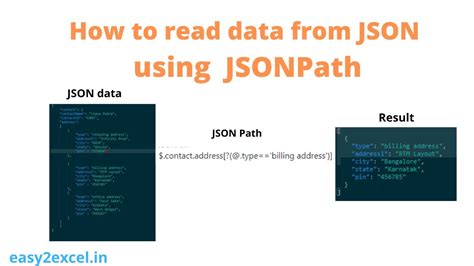In the endlessly evolving landscape of software development, one constant is the need for efficient data handling. Amongst the plethora of tools available to developers, JSONPath has carved out a niche for itself, gaining popularity for its utility in querying JSON data. Originating from the concept of XPath used in XML, JSONPath allows for the pinpoint extraction and manipulation of data from a JSON structure. It’s like having a guide map to directly locate data without the verbose traversal operations commonly associated with handling hierarchical data formats.
The beauty of JSONPath lies in its simplicity and direct approach. Consider a scenario where you have to extract titles of books priced below $10 from a JSON stored list. Using JSONPath, this can be neatly achieved with the query $.store.book[?(@.price < 10)].title. This elegance and precision of querying without needing to write loops or conditional statements make JSONPath a favored tool in many developers’ toolkits. The succinctness of JSONPath queries not only saves time but reduces the codebase making maintenance simpler.
Operational efficiency aside, JSONPath is instrumental in various modern software ecosystems. Usage in systems like Kubernetes for handling configuration data or in API testing and development using platforms like Postman illustrates its versatile applications. Not confined to backend processes, JSONPath has relevance in frontend development as well, proving beneficial in handling data fetched via APIs, thereby streamlining the data management process in full-stack development environments.
JSONPath isn’t without its critiques and competitors. Tools like jq and XPath offer similar functionalities with their own sets of advantages. For instance, jq, a tool that has carved its own niche in handling JSON data, allows not just for querying but also modifying the data structure which is not directly possible with JSONPath. Meanwhile, XPath, while primarily associated with XML, shares syntactic similarities with JSONPath offering a familiar querying experience for those transitioning between XML and JSON handling.
Despite some preferring these alternatives for their added features or syntactic preferences, JSONPath holds its ground for its specific use case scenarios like in OpenAPI specifications where it is indispensable. Also, its integration into various popular dev tools and IDEs promotes its usage among developers who find its integration in their existing workflows seamless.
When discussing the scalability of JSONPath in terms of handling massive datasets or complex queries, it’s essential to consider its performance implications. While JSONPath excels in simplicity, excessive or deeply nested queries might introduce performance bottlenecks in large-scale applications. Therefore, understanding when to use JSONPath, and when to switch to more robust solutions like manual coding or other querying languages, becomes crucial for optimal performance.
In conclusion, JSONPath is more than just a querying tool; it’s a significant part of modern data handling ecosystems that offers a balance of ease of use and efficiency. For developers and system administrators alike, understanding and utilizing JSONPath can lead to more efficient code and systems, though always with an eye on its limitations and alternatives. As data continues to be an integral part of software applications, tools like JSONPath will remain critical in the toolkit of those tasked with managing and manipulating this data efficiently.


Leave a Reply